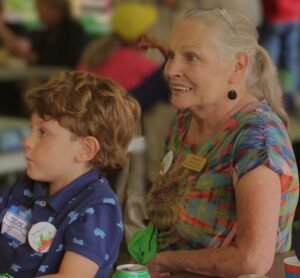No property tax hike proposed for Maggie Valley’s next budget

Maggie Valley property owners likely won’t suffer sticker shock when they open their next property tax bills.
Town Manager Vickie Best told the town board last week that her proposed budget will contain no property tax increase despite some uncertainty in sales tax revenue projections post-Tropical Storm Helene.
At a workshop, Best gave aldermen a broad overview of her proposed fiscal year 2025-26 budget that includes holding the property tax rate at 40-cents per $100 of assessed value. The coming fiscal year that begins July 1 would mark the fifth-straight year that the property tax has remained the same in Maggie Valley, if the board agrees with Best’s proposal.
It also keeps Maggie’s ranking as having the lowest property tax rate among the four towns in Haywood County. Clyde has a current tax rate of 43 cents per $100 of assessed value while Waynesville and Canton have rates of 47 and 55 cents per $100, respectively.
“We have always been proud of that,” Best said of the town’s tax rate.
Maggie Valley is projecting a 2% increase in sales tax revenue in the coming fiscal year. The town expects to generate $830,000 in sales tax revenue in the current fiscal year, slightly higher than the $800,000 that was budgeted last spring.
Sales tax growth has returned to normal levels after seeing record growth post-COVID. Sales tax revenue is the town’s second greatest source of revenue after property tax collections.
Finance Director Misty Hagood said sales tax revenue is all over the map, ranging from up 8% one month to flat to down 2% in other months.
“It’s really volatile right now,” Hagood said.
The town will have a better feel for future sales tax revenue as the tourist season begins to ramp up later this spring. But Alderman Jim Owens warned that the destruction from Tropical Storm Helene could have a negative impact on the tourism industry. Owens is also a member of the Haywood County Tourism Development Authority.
“The I-40 closure is going to have an impact, no question,” Owens said. “Nobody knows for sure. We might have a better handle once we get some more time under our belt. Sales tax is all about visitation.”
But the town does have an ace in the hole, as sales tax distribution is based on population. Around 50 new homes have been constructed in the last year, and more are set to be built. That means a boost in the town’s population and with it more sales tax revenue.
“They are selling houses faster than they can build them,” said Mayor Mike Eveland. “We could see a bigger number increase than most people in the county. We would be getting a little bigger pot than we were before. That’s not a bad thing, with all the darkness and all the clouds.”
Alderman Tim Wise noted that the town’s population increase would act as a cushion if sales tax revenue is down in the coming fiscal year.
“We are talking local option sales tax, even if it is down 20%, just the new homes should be a wash on that or darn close,” Wise said.
Best’s proposed budget also includes a 2.5% cost-of-living adjustment (COLA) for town employees. That is down from the 4% COLA employees received in the current fiscal year. Best told alderman that the Consumer Price Index was at 2.9% over the last 12 months, which is the reason for the lower proposed COLA.
But Wise asked Best to come back with a proposal that would boost the COLA to 3%. A 2.5% COLA would be $56,114.
“I would like to see, just to see, what the difference between 2.5% and 3% would look like,” Wise said. “My concern is that inflation is over 3% right now.”
